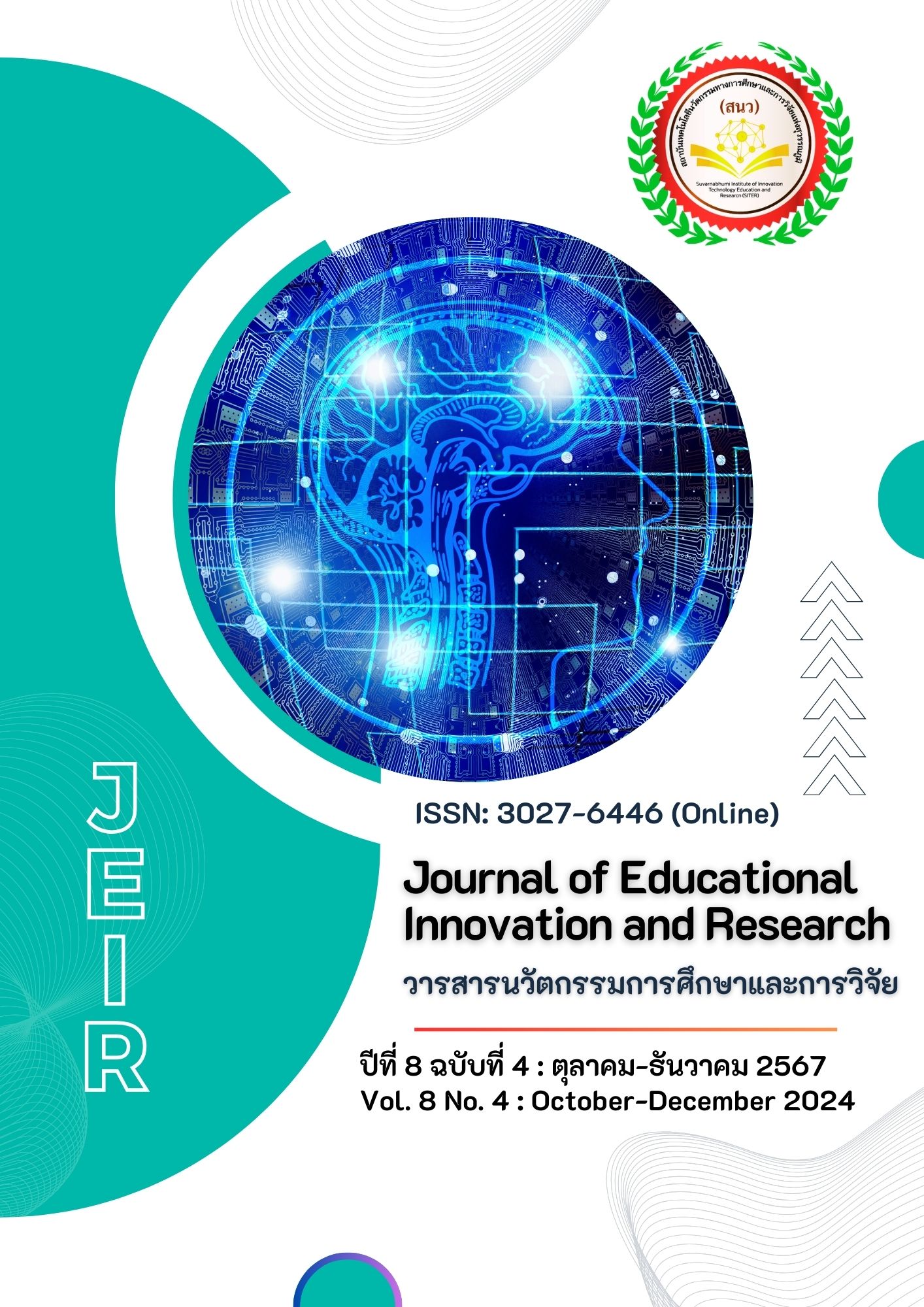ปัจจัยที่มีอิทธิพลต่อการฟื้นตัวของผู้ป่วยบาดเจ็บศีรษะในจังหวัดสุราษฎร์ธานี
Main Article Content
บทคัดย่อ
การบาดเจ็บที่ศีรษะ (head injury) ทำให้เกิดความเสียหายต่อสมอง (Trauma brain) เกิดความพิการทางกาย และเสี่ยงต่อการเสียชีวิต วิจัยครั้งนี้เป็นการศึกษาเชิงบรรยาย เพื่อศึกษาปัจจัยทำนายที่มีอิทธิพลต่อการฟื้นตัวของผู้ป่วยบาดเจ็บศีรษะ กลุ่มตัวอย่างคือเวชระเบียนของผู้ป่วยบาดเจ็บศีรษะ เข้ารับการรักษาที่หอผู้ป่วยศัลยกรรมและหอผู้ป่วยวิกฤตศัลยกรรมของโรงพยาบาลสุราษฎร์ธานี ระหว่างปี พ.ศ 2563-2566 จำนวน 220 คน สุ่มเลือกกลุ่มตัวอย่างอย่างเป็นระบบ (systematic randomization) เกณฑ์การคัดเข้า (Inclusion criteria) ได้แก่ เวชระเบียนของผู้ป่วยบาดเจ็บที่ศีรษะ อายุ 18 ปีขึ้นไป และได้รับการจำหน่ายออกจากโรงพยาบาล เกณฑ์คัดออก ได้แก่ เวชระเบียนของผู้ป่วยบาดเจ็บศีรษะที่เสียชีวิตระหว่างรักษาตัวในโรงพยาบาลสุราษฎร์ธานี เครื่องมือวิจัยเป็นแบบบันทึกข้อมูลจากเวชระเบียนที่ผู้วิจัยสร้างขึ้น ได้ค่า CVI เท่ากับ 0.89 และได้ค่าความเที่ยงตรงในการวัด (Reliability) เท่ากับ 0.87
ผลการวิจัย พบว่า อุณหภูมิแรกรับ (Temperature) (β=.157) จำนวนวันนอนโรงพยาบาล (LOS) (β=-.197) ความดันโลหิต Systolic Blood Pressure (β=-.085) ร่วมกันทำนายการฟื้นตัวของผู้ป่วยบาดเจ็บศีรษะร้อยละ 79.6 (R2=.796) อย่างมีนัยสำคัญทางสถิติที่ P<.01
สรุปผลการวิจัย ผู้ป่วยบาดเจ็บศีรษะในระดับปานกลางถึงระดับรุนแรงต้องควบคุมระดับอุณหภูมิของร่างกายแรกรับ ระดับความดันโลหิต Systolic Blood Pressure และลดจำนวนวันนอนโรงพยาบาล จะทำให้การฟื้นตัวของผู้ป่วยบาดเจ็บศีรษะดีขึ้น
Article Details

อนุญาตภายใต้เงื่อนไข Creative Commons Attribution-NonCommercial-NoDerivatives 4.0 International License.
เอกสารอ้างอิง
Kalpinski, R.J., Williamson, M.L.C., Elliott, T.R., Berry, J.W., Underhill, A.T., Fine, P.R. (2013). Modeling the prospective relationships of impairment, injury severity, and participation to quality of life following traumatic brain injury. BioMed Research International, 2013, 102570. https://doi.org/10.1155/2013/102570
Kan, C., Saffari, M. & Khoo, T.H. (2009). Prognostic factors of severe traumatic brain injury out come in children aged 2-16 years at a major neurosurgical referral center. Malaysian Journal of Medical Sciences, 16(4), 25-33.
Office of Transport and Traffic Policy and Planning. (2015). Office of the Permanent Secretary, Ministry of Transport. Transportation Safety Center hotline. https://www.otp.go.th/category/sub/149
Sobut, P. and Phutthikhamin, N.. (2022). Factors Predicting Brain Injury Severity in The Patients with Traumatic Brain Injury. Mahasarakham Hospital Journal, 19(1), 77-87.
Sobut, P., Udonsat, S., Treesorn, K. & Thongmee, P. (2023). Factors Predicting Mortality in the Patients with Moderate to SevereTraumatic Brain Injury. Nursing Journal of the Ministry of Public Health, 33(2), 55-70.
Tardif, P.A., Moore, L., Boutin, A., Dufresne, P., Omar, M., Bourgeois, G., Bonaventure, P.L., Kuimi, B.L., Turgeon, A.F. (2014). Hospital length of stay following admission for traumatic brain injury in a Canadian integrated trauma system: A retrospective multicenter cohort study. Injury, 48(1), 94-100. https://doi.org/10.1016/j.injury.2016.10.042
Tenovuo, O., Diaz-Arrastia, R., Goldstein, L.E., Sharp, D.J., van der Naalt, J., Zasler, N.D. (2021). Assessing the Severity of Traumatic Brain Injury-Time for a Change? Journal of Clinical Medicine, 10(1), 148. https://doi.org/10.3390/jcm10010148
Theadom, A., Barker-Collo, S., Jones, K., Kahan, M., Te Ao, B., McPherson, K., Starkey, N., Feigin, V., Kydd, R., Barber, P.A., et al. (2017). Work Limitations 4 Years After Mild Traumatic Brain Injury: A Cohort Study. Archives of Physical Medicine and Rehabilitation,98(8),1560-1566. https://doi.org/10.1016/j.apmr.2017.01.010
Tohme, S., Delhumeau, C., Zuercher, M., Haller, G. & Walder, B. (2014). Prehospital risk factors of mortality and impaired consciousness after severe traumatic brain injury: an epidemio logical study. Scandinavian Journal of Trauma, Resuscitation and Emergency Medicine, 22(1), 1-9.
Tokutomi, T., Morimoto, K., Miyagi, T., Yamaguchi, S., Ishikawa, K., Shigemori, M. (2003). Optimal temperature for the management of severe traumatic brain injury: effect of hypothermia on intracranial pressure, systemic and intracranial hemodynamics, and metabolism. Neurosurgery, 52(1), 102-111.
Wågberg, S., Stålnacke, B.M., Magnusson, B.M. (2023). Gender and Age Differences in Outcomes after Mild Traumatic Brain Injury. Journal of Clinical Medicine,12(15), 4883.
Walker, W.C., Pickett, T.C. (2007). Motor impairment after severe traumatic brain injury: A longitudinal multicenter study. Journal of Rehabilitation Research & Development, 44, 975–82. https://doi.org/10.1682/JRRD.2006.12.0158
Williamson, M.L.C., Elliott, T.R., Bogner, J., Dreer, L.E., Arango-Lasprilla, J.C., Kolakowsky-Hayner, S.A., et al. (2016). Trajectories of Life Satisfaction Over the First 10 Years After Traumatic Brain Injury: Race, Gender, and Functional Ability. The Journal of Head Trauma Rehabilitation, 31, 167–79. https://doi.org/10.1097/HTR.0000000000000111
World Health Organization. (2015). World road safety report 2015. https://www.afro.who.int/sites/ default/files/2017-06/summary%20thailand
Yang, C.C., Bamodu, O.A., Chan, L., Chen, J.H., Hong, C.T., Huang, Y.T., Chung, C.C. (2023). Risk factor identification and prediction models for prolonged length of stay in hospital after acute ischemic stroke using artificial neural networks. Frontiers in Neurology, 9(14),1085178. https://doi.org/10.3389/fneur.2023.1085178


